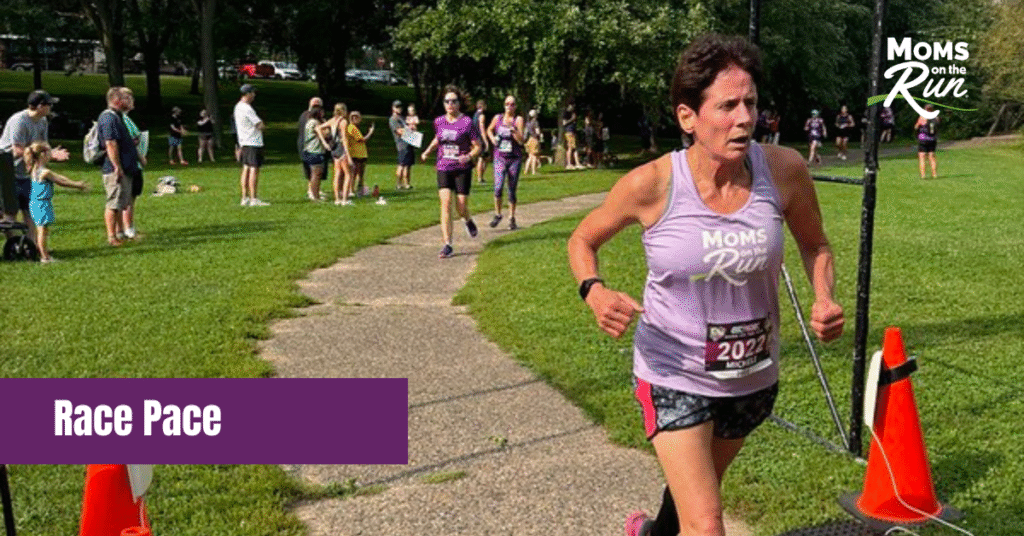If you’ve ever started a race feeling amazing only to crash halfway through, you’ve discovered one of the biggest challenges in racing: Pace! How fast should you go so that you don’t burn out too soon, and are able to stay the course (pun intended!) and finish strong? Previously, we discussed many strategies that can help you become a stronger racer, but none are as important as simply finding the right race pace.
Pace Variation
Many runners train at one “default” pace: whatever feels comfortable on any given day. But running at the same speed all the time doesn’t prepare you for the different demands of racing. That’s where pace training comes in, such as the work we do at class in Moms on the Run. By training our bodies to understand and feel different paces before race day, and building that familiarity with a variety of running speeds, we will be better able to dial into our ideal race paces when it matters most!
Pace Types
When you train at different paces (easy runs, tempo runs, speed intervals, and long runs) you teach your body how to handle fatigue, how to recover, and most importantly, how to recognize your goal race pace. You are developing an internal pacing clock.
Easy runs should feel relaxed and conversational. These build endurance and support recovery. Tempo runs, on the other hand, are run at a “comfortably hard” pace—faster than easy but not all-out; you should still be able to maintain this pace for about an hour. These runs are golden for race preparation because they teach you how to maintain a steady, challenging pace, just like you’ll need to do on race day. Interval or speed workouts improve your power and help you learn how to push in short bursts, which is what you’ll need for strong finishes or surging on hills.
Race Pace Strategy
When you get to the starting line, your body should know what your race pace feels like, because you’ve practiced it. So how do you find your pace to practice for a particular race? Start by considering your goal, whether that’s simply finishing strong, beating a previous time on that course or achieving a PR for that distance. Your tempo pace is often a great target for 10Ks, and it will be just a little slower for half marathons. A 5K may feel like more of a “controlled sprint,” as you are running a bit faster than that threshold pace from your tempo runs.
Remember, race day adrenaline will give you a slight boost! Keep this in perspective so you aren’t trying to “prove” anything in mile one. The more you have practiced running different paces, the more in tune you’ll become with your body—and the more likely you’ll be to find your perfect pace for racing. For more about training for a goal place on race day, see Runner’s World’s Everything to Know about Running Pace Training.
